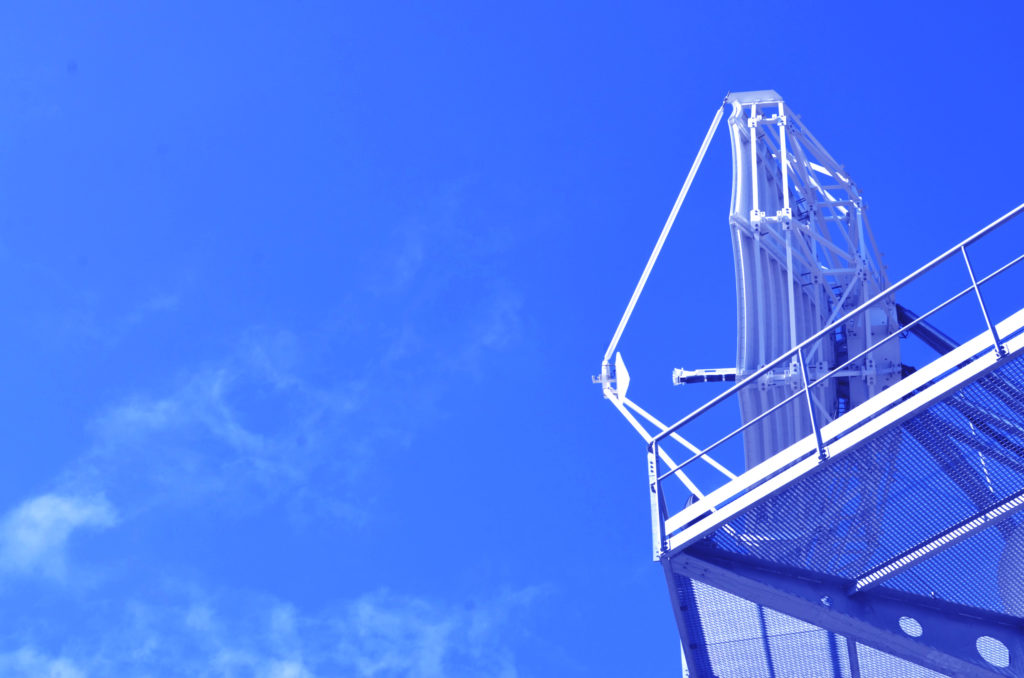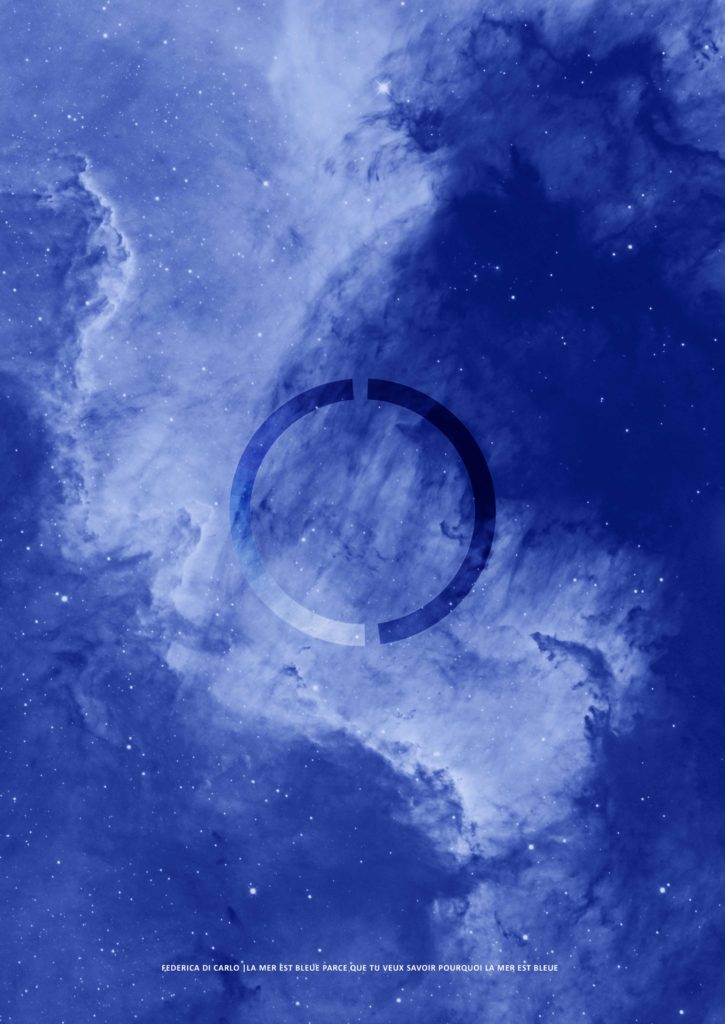#Artistresidency Federica Di Carlo at Bureau des Arts
Always interested in the concept of boundary, in the last year the atmosphere and the sky have become the main subjects of Federica Di Carlo’s (Rome, 1984) research. Starting from scientific assumptions, this artist asks herself about philosophical questions related to the relationship between man and nature. During her period of residence at Bureau des Arts et Territoires, starting from the blue arbitrarily attributed to the city of Montpellier, the artist went to ask to local citizens and scientists why this city was considered blue. Most of the answers were «for the colour of the sea and the sky». The sea and the sky are visible limits that unite and separate everything on earth; they dilate, shrink, invade, and define the space around them according to specific physical laws. On one hand, Federica Di Carlo wondered how a colour could be transformed into a border and how, on the other hand, natural physical boundaries such as sky, sea and atmosphere could change a concept.


Using for the title of her project a haiku written by Jack Kerouac, «The sky is blue because you want to know why the sky is blue», where the word “sky” is replaced by “sea”, Federica Di Carlo invited people to deepen and investigate the theme of the border starting from the simple question that we make since childhood: Why sky and sea are blue?
“The sea is blue because you want to know why the sea is blue” is the final title of the participatory event that the artist conceived in the city of Montpellier. The artist, with the Bureau des Arts et Territoires and in association with the Astronomical Society of Montpellier, succeeded to open to the public La Tour de la Babote (just for one night), an ancient Astronomical Observatory and a monumental historical tower built in the XII century and inwardly unknown by most of Montpellier’s citizens.

The public was invited to visit La Tour de la Babote as a performative experience, traveling trough physical and knowledge’s boundary, finally accessible. Inside the two main rooms (the Nicolas Montviloff room and the Pierre Vauriot room), people was welcomed by scientists in blue coats and invited to talk, discuss and discover new points of view on boundaries theme. At the end of this route, in the upper hall of the tower, people was invited to take a poster created by the artist as a moment’s trace, which is represented a blue marine-atmosphere, so defined by Di Carlo.
The image, that may shows at the same time a sea-sky seen from above, it’s actually a picture of an interstellar cloud, shot in black and white by a space telescope, which Federica has modified by adding the shade of blue that has identified with Montpellier.
From this first blue atmosphere, Di Carlo generated a new body works where the atmosphere of Montpellier is crushed and tightened with a clamp, together with an oyster shell fossil that the artist found on the French coast.
The observation of the world’s equilibrium is the basis of Federica Di Carlo’s research. To investigate the concept of border as a limit but also as a connection amongst the existence, the human being and the nature.


Since years the artist is dealing with the element of light as a first-ever border with whom to relate. In her installations, often environmental, this light becomes a medium, which modulates through the study of physics laws and the mechanisms of vision.
Federica Di Carlo addresses the interference zones that science tends to reject because of our established patterns. These paradoxes function as investigative material in her practice to reflect on other meanings such as containment, crossing and trespassing between us and the world.





